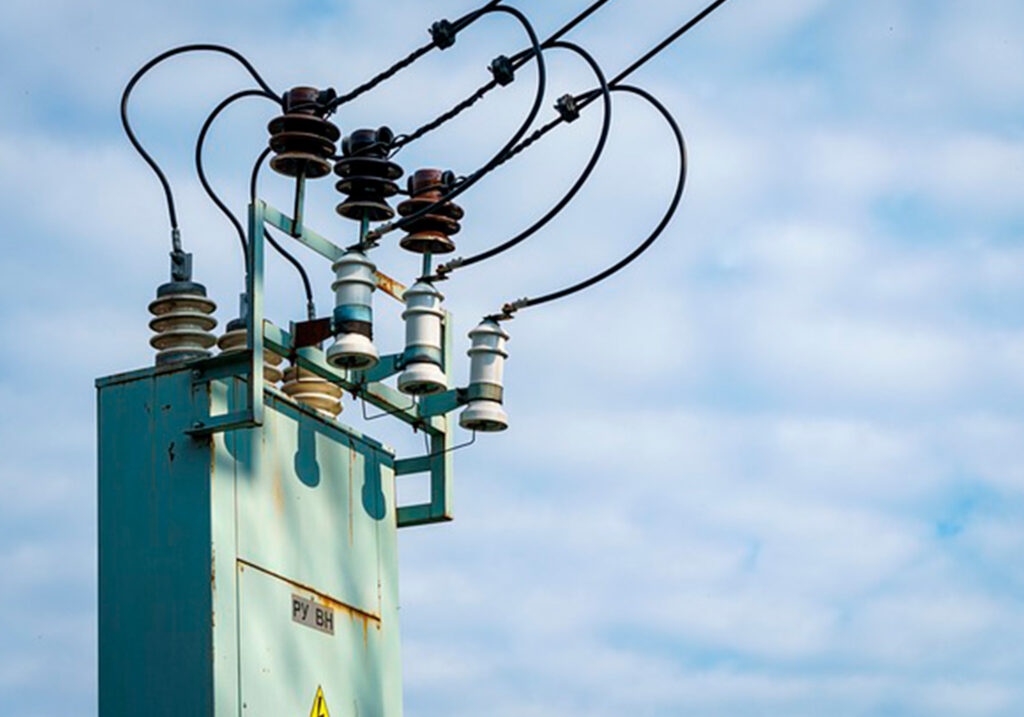Building a metal barn offers numerous advantages, but when considering the placement of such a structure, especially near or under power lines, several factors must be carefully evaluated.
If you want to know if you can put a metal barn under a power line, you have come to the right place!
This article from Lion Barns explores the feasibility, safety considerations, legal implications, and best practices associated with constructing a metal barn under a power line.
Understanding Power Lines and Their Risks
Types of Power Lines
Power lines come in various types, each carrying different voltage levels and serving distinct purposes. Understanding these distinctions is crucial when planning construction near them.
High-Voltage Transmission Lines: These lines transport electricity over long distances and carry extremely high voltages, often ranging from 69,000 to over 500,000 volts. They are supported by large steel towers and are a critical part of the national power grid. Due to their high voltage, these lines pose significant risks if not properly accounted for during construction. The electromagnetic fields generated by these lines can extend over considerable distances, influencing not only the immediate area beneath them but also the surrounding environment.
Medium-Voltage Distribution Lines: These lines deliver electricity from substations to neighborhoods and businesses, typically carrying voltages between 2,400 and 69,000 volts. They are commonly seen on wooden poles along streets and rural roads. While not as dangerous as high-voltage transmission lines, they still require careful consideration due to their potential to cause electrical hazards and their impact on nearby electronic equipment.
Low-Voltage Service Lines: These are the lines that connect directly to homes and small businesses, carrying lower voltages suitable for residential use. Although they carry the least amount of voltage, they still pose risks, especially when metal structures like barns are constructed nearby. Proper precautions must be taken to ensure these lines do not come into contact with the metal barn or any equipment within.
Risks Associated with Power Lines
Power lines, regardless of their type, pose inherent risks that must be addressed before any construction.
Electrical Hazards: Metal is an excellent conductor of electricity. A metal barn under power lines increases the risk of electrical hazards, including electrocution and fires. Even indirect contact through conductive materials or equipment can result in serious injuries or fatalities. This makes it imperative to maintain safe distances and implement appropriate grounding measures.
Magnetic Fields: Power lines generate electromagnetic fields (EMFs) that can potentially affect sensitive electronic equipment stored in the barn. Prolonged exposure to EMFs has been a topic of health research, and while definitive conclusions are still debated, minimizing exposure is generally recommended. Equipment malfunctions and data corruption are also possible in high-EMF environments.
Physical Damage: Falling power lines, due to storms or accidents, can cause significant damage to metal structures and pose serious safety risks. The structural integrity of a metal barn could be compromised if a power line falls on it, leading to potential collapse or fires. Additionally, the risk of flying debris during severe weather can exacerbate these dangers.
Legal and Regulatory Considerations
Building Codes and Zoning Regulations
Local building codes and zoning regulations often have specific requirements for constructing near power lines. These regulations are designed to ensure safety and prevent interference with utility operations.
Setback Requirements: Many jurisdictions mandate minimum distances, known as setbacks, between structures and power lines. These setbacks are intended to provide a buffer zone that reduces the risk of accidental contact and allows safe access for maintenance.
Height Restrictions: Restrictions may be imposed on the height of structures near power lines to prevent accidental contact. Taller structures pose a greater risk of breaching safe clearance zones, which can lead to hazardous situations.
Permit Requirements: Obtaining the necessary permits from local authorities is essential. This process often involves inspections and approvals from utility companies. Failure to secure proper permits can result in fines, legal complications, and mandatory removal of the structure.
Utility Company Policies
Utility companies have their own guidelines and policies regarding construction near power lines. It is crucial to consult with the relevant utility provider before proceeding.
Right-of-Way Easements: Power lines often run through easements, which are legal rights allowing utilities to access and maintain the lines. Building within these easements is typically prohibited. Encroaching on an easement can lead to legal disputes and forced removal of the structure.
Clearance Requirements: Utilities specify minimum clearance distances to ensure safety and maintenance access. These requirements are non-negotiable and are enforced to prevent accidents and ensure the efficient operation of power infrastructure.
Safety Measures and Best Practices
Maintaining Safe Distances
Ensuring a safe distance between the metal barn and power lines is paramount.
Horizontal Clearance: Maintain adequate horizontal distance to prevent accidental contact during construction or maintenance. This distance also helps protect against the risk of arcing, where electricity can jump from the line to nearby structures.
Vertical Clearance: Ensure the barn’s height does not infringe on the minimum vertical clearance required by the utility company. This is particularly important for structures with tall equipment or antennas that could breach safe zones.
Grounding and Electrical Safety
Proper grounding of the metal barn can mitigate some electrical risks.
Grounding Systems: Install a robust grounding system to direct stray electrical currents safely into the ground. This reduces the risk of electrocution and helps protect electrical equipment within the barn.
Surge Protection: Use surge protectors for any electrical equipment housed in the barn to guard against voltage spikes. Lightning strikes and power surges can cause significant damage to unprotected devices.
Regular Inspections and Maintenance
Regular inspections and maintenance are critical for ongoing safety.
Structural Inspections: Periodically inspect the barn for any signs of electrical damage or wear. Look for scorch marks, corrosion, or unusual noises that could indicate electrical issues.
Power Line Monitoring: Stay informed about the condition of nearby power lines and report any issues to the utility company promptly. Regular communication with utility providers ensures that potential hazards are addressed quickly.
Insurance and Liability Considerations
Insurance Coverage
Securing appropriate insurance coverage is essential when constructing near power lines.
Property Insurance: Ensure your policy covers potential damages related to power line proximity. This includes coverage for fires, electrical damage, and structural repairs.
Liability Insurance: Protect yourself from liability in case of accidents or injuries resulting from electrical hazards. Comprehensive liability coverage can shield you from financial burdens in the event of a lawsuit.
Liability Issues
Understanding potential liability issues is crucial.
Personal Liability: As the property owner, you may be held liable for any accidents caused by improper construction near power lines. This includes injuries to workers, visitors, or even utility company personnel.
Utility Company Liability: Utilities may be liable for damages resulting from their negligence, such as failing to maintain power lines properly. However, proving negligence can be challenging, so it’s important to document all interactions and maintenance records.
Alternatives to Building Under Power Lines
Relocating the Barn Site
If building under power lines poses too many risks or challenges, consider relocating the barn to a safer location on your property. This can provide peace of mind and simplify compliance with regulations. Moving the barn further from power lines can also enhance its usability and reduce long-term maintenance concerns.
Using Non-Metal Materials
In some cases, using non-metal materials for the barn’s construction can reduce electrical risks. However, this may compromise the durability and longevity associated with metal barns. Weighing the pros and cons of alternative materials is essential before making a final decision.
Conclusion
While it is technically possible to construct a metal barn under a power line, it involves navigating a complex landscape of safety risks, legal requirements, and practical considerations. Thorough research, consultation with utility companies, and adherence to local regulations are essential steps in ensuring a safe and compliant construction process. By understanding the potential hazards and implementing best practices, property owners can make informed decisions that protect their investments and ensure the safety of all occupants.

